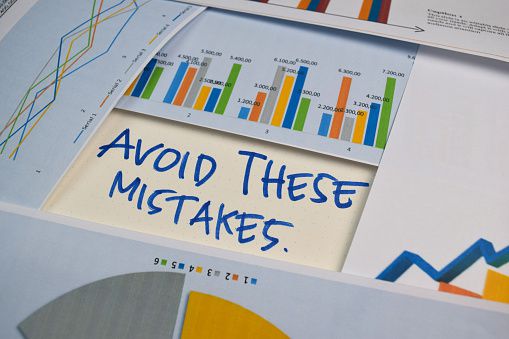Early jury research is critical for achieving superior litigation outcomes. Focus groups, mainly, are best done early in the case, well before mediation. Focus groups are where trial attorneys can find out the true strengths and weaknesses of their case and gather the most quality feedback possible. A focus group can pinpoint various issues, highlighting what jurors do and do not understand, demonstrating what witnesses, exhibits, and facts a defense attorney has that are most effective, and perhaps most importantly, what confused the group.
These focus groups have the potential to produce valuable insights to drive critical decisions in settlement negotiations and trial strategy, resulting in better financial outcomes. However, to effectively test the elements of your client’s case, there are focus group mistakes that trial attorneys need to avoid. From too many mock jurors to presentations that are too long, discover the five common mistakes made when conducting focus groups, the consequences of these mistakes, and necessary adjustments.
What are common focus group mistakes?
Five common focus group mistakes include slides with too much information, too many mock jurors in the focus group, too long of a day that leads to juror fatigue, presentations that are too long, and the approach to testing damages.
Mistake #1: Slides With Too Much Information
The way the slides are presented in many focus groups is ineffective. Juror attention span is poor, and when slides have too much information, the juror’s brain won’t be able to handle or process that amount of material. In addition to too much information, other common problems with slides are that the font is too small to be legible or the font colors make them difficult to read.
When it comes to slides, less is more. Rather than trying to cram 12 bullet points onto one slide, including three to four bullet points at a maximum would better serve trial attorneys. This format allows the font size to be large enough to be read by the participants and keeps them from being overwhelmed with information. Another way to make the slides more effective is to have the bullet points build on one another. Rather than having all your bullet points come up simultaneously, have them appear one at a time; this leads to better attention and better memory retention, allowing jurors to take notes more specifically on each point.
Mistake #2: The Number of Focus Group Members
If a focus group has 30 mock jurors, it’s virtually impossible to get quality feedback from all 30 people. Instead, that number needs to be half. Influential focus groups need approximately 12 to 18 people, ideally 14 or 15. This group size ensures that the trial attorney can get quality information from each participant. When assembling the focus group, recruiting a sample that matches your demographic for that venue is essential.
Mistake #3: Juror Fatigue
Focus groups that start at 9:00 in the morning and then run until 6:00, 7:00, or sometimes even 8:00 pm are much too long. Remember that a start time of nine in the morning means asking jurors to show up around 7:00-7:30 am to get processed and fill out paperwork. It leads to jurors that are far too exhausted later in the day and won’t be able to provide the quality information desired.
Anything presented to these jurors from approximately 4:00 pm onwards will likely be a wasted effort. Rather than overwhelming jurors and causing juror fatigue, focus groups should be spread over two days or even a day and a half, allowing for information to be presented the next day when jurors are fresh.
If jurors are so overloaded with information that they are wearing down, the focus group has ceased to be successful. Therefore, focus groups are most effective when scheduled to end between 4:00 and 5:00 pm. Trial attorneys can also work to combat juror fatigue and ensure they are still getting quality feedback by scheduling more breaks in the afternoon.
Mistake #4: Presentation Length
One of the primary ways that jurors can get overwhelmed with information is by having presentations that are too long. Giving jurors a 90-minute presentation that covers three different topics and then asking them for feedback is too long and gives them too much information. Like with slides, less is more when it comes to presentation length.
Rather than a few long presentations, it’s more effective to divide up your topics into subtopics. This way, a mock jury will hear a 15 to 20-minute presentation and immediately be asked to provide feedback. Any presentation that starts to go over 30 minutes is too long and should be subdivided. For example, if you think about liability, that often can be as many as two or three sub-topics.
Look at your topic list and try to break it down, isolating topics as much as possible. Topic isolation allows for much more focused feedback on these subtopics. In addition to the input, trial attorneys should also allow time to take questions, as these questions can frequently be just as valuable as the feedback in these focus groups.
Mistake #5: The Approach to Testing Damages
In the focus group methodology, you’re just looking for ballparks while testing damages. Don’t go into the focus group thinking you’ll be able to test damages for accuracy and precision. Instead, understand that what you are looking for is where these people are regarding the bigger picture. To scientifically test for damages, you must do a mock trial. Present the damages arguments as the final information at the end of the day.
Make your focus groups better, and get the quality information you are looking for by avoiding these five common focus group mistakes. Our litigation research experts can help you test the elements of your client’s case, including the litigants, evidence, themes, and witnesses, to quickly know how they are likely to be viewed by a jury. Courtroom Sciences’ scientific approach to research strategies leads to predictive results and superior litigation outcomes. Speak with one of our experts to get started.
Be confident in achieving superior litigation outcomes. CSI has the expertise, track record, and capabilities to help you win.



